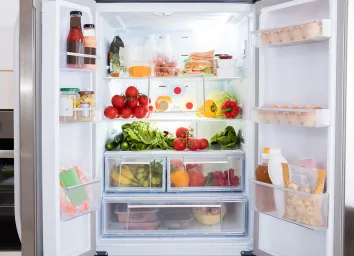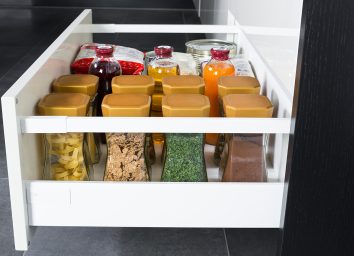15 Worst Kitchen Disinfecting Mistakes You Can Make
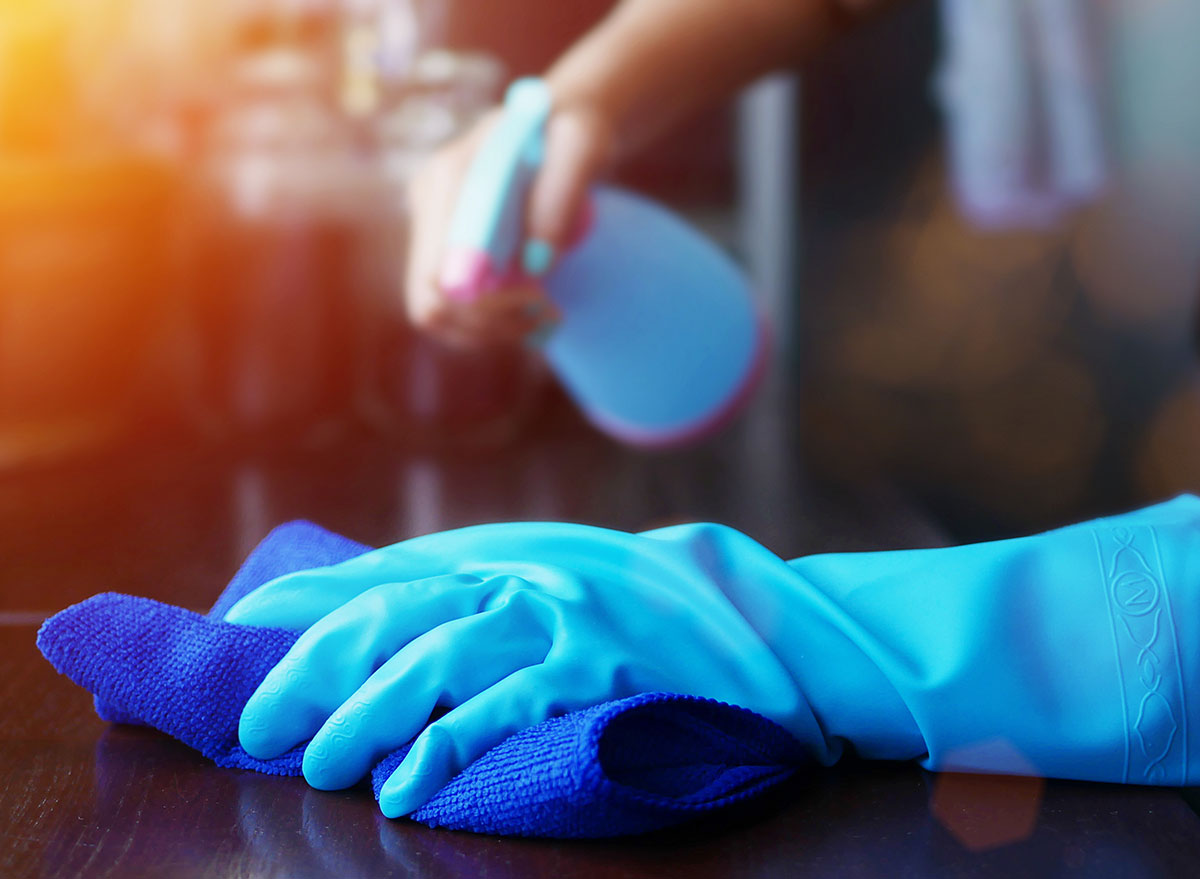
To fight off COVID-19, social distancing and coronavirus-related guidelines recommended by the CDC have been essential. One of the guidelines recommends people to keep their home clean and disinfected, in order to protect themselves from getting sick. Especially areas that are more commonly used like the kitchen. In early March, disinfectant products were the number one item that people were buying the most, according to Nielsen data. But are the products you are using to wipe and spray doing their actual job? Here are some common kitchen disinfecting mistakes that people make.
You're not using the right products.
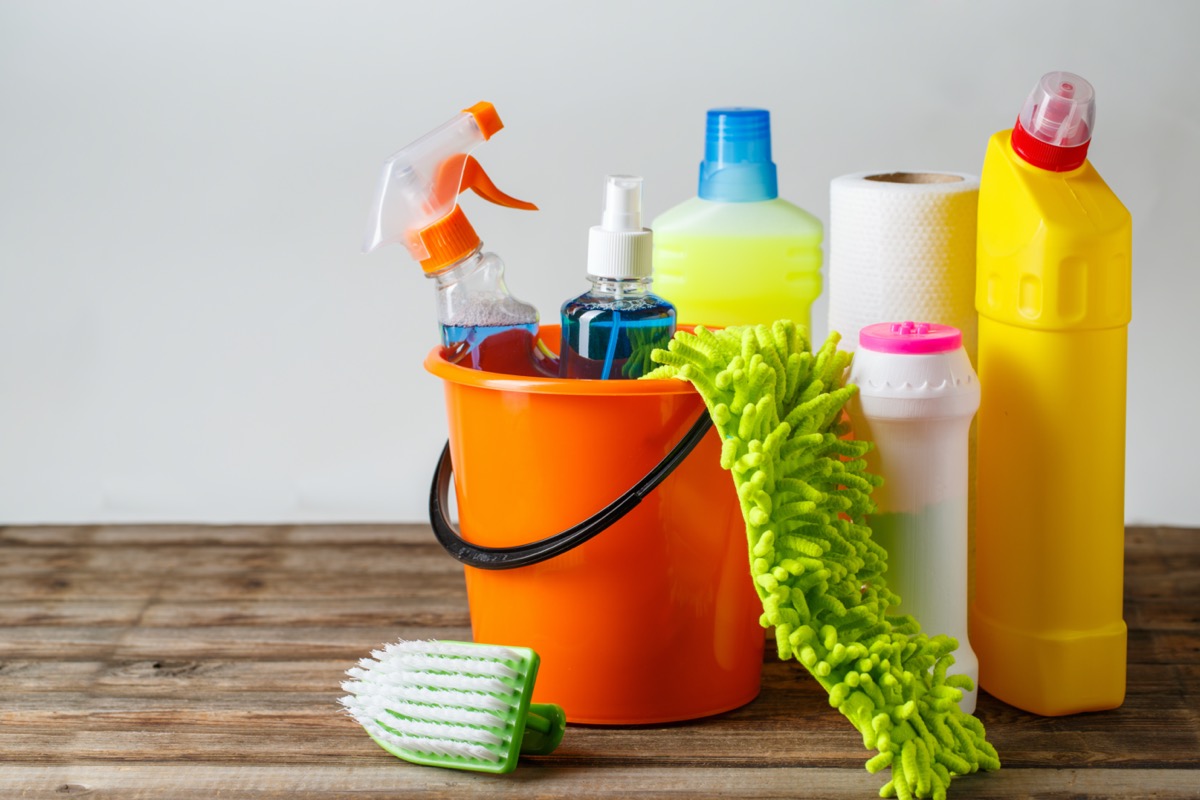
There is a difference between cleaning and disinfecting. Cleaning means the removal of germs and dirt from surfaces. It does not kill the germs but it does lower their numbers and risk of spreading infection. Disinfecting is using chemicals to kill germs on the surfaces. You need the right product that can kill germs. It is recommended to use EPA-registered disinfectants for your home. If you can't find any at your local store, you can create a DIY diluted bleach solution from the CDC. Don't forget to wear gloves!
You're not disinfecting daily.
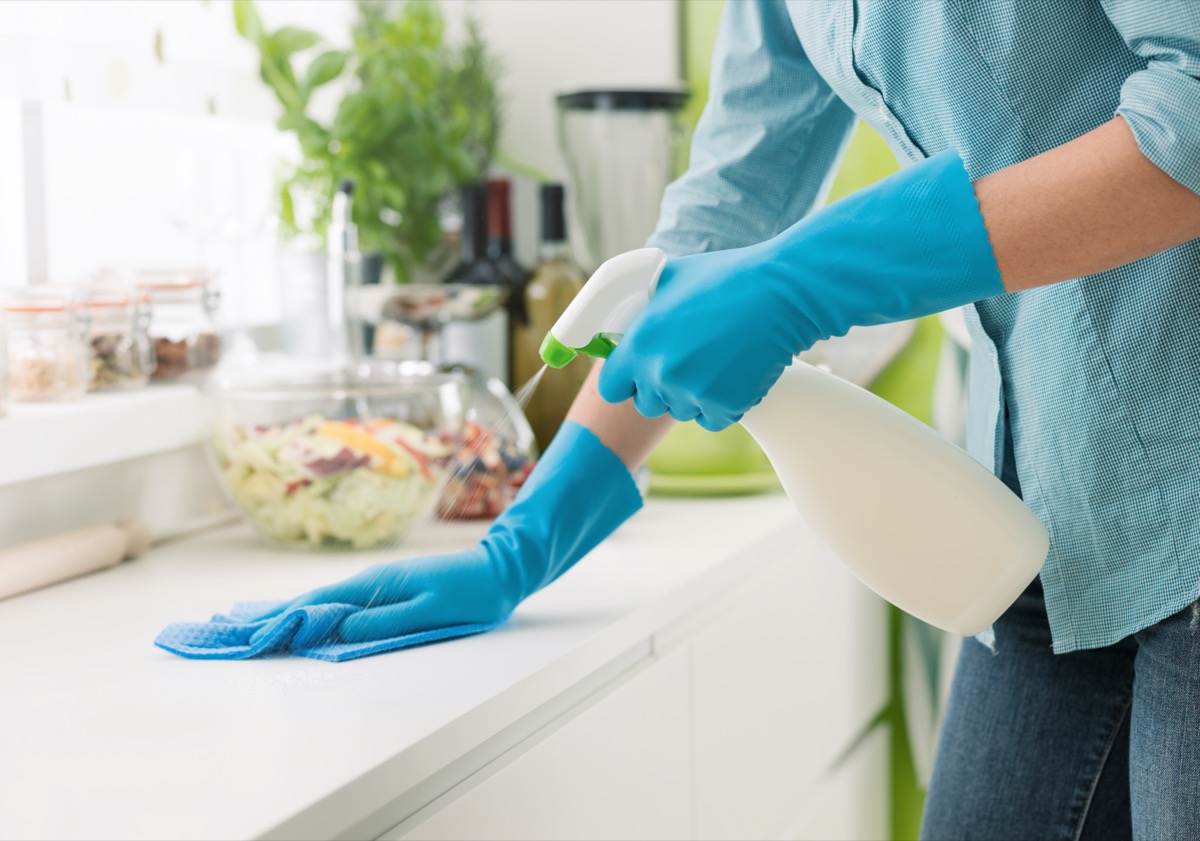
Disinfecting only kills germs on surfaces. According to the CDC, "by killing germs on a surface after cleaning, it can further lower the risk of spreading infection." During a pandemic, it is important to disinfect your kitchen daily. Remember, disinfecting does not remove germs but it can lower the risk of getting sick. Most importantly make sure to wash your hands after.
You're wiping off disinfectants quickly.
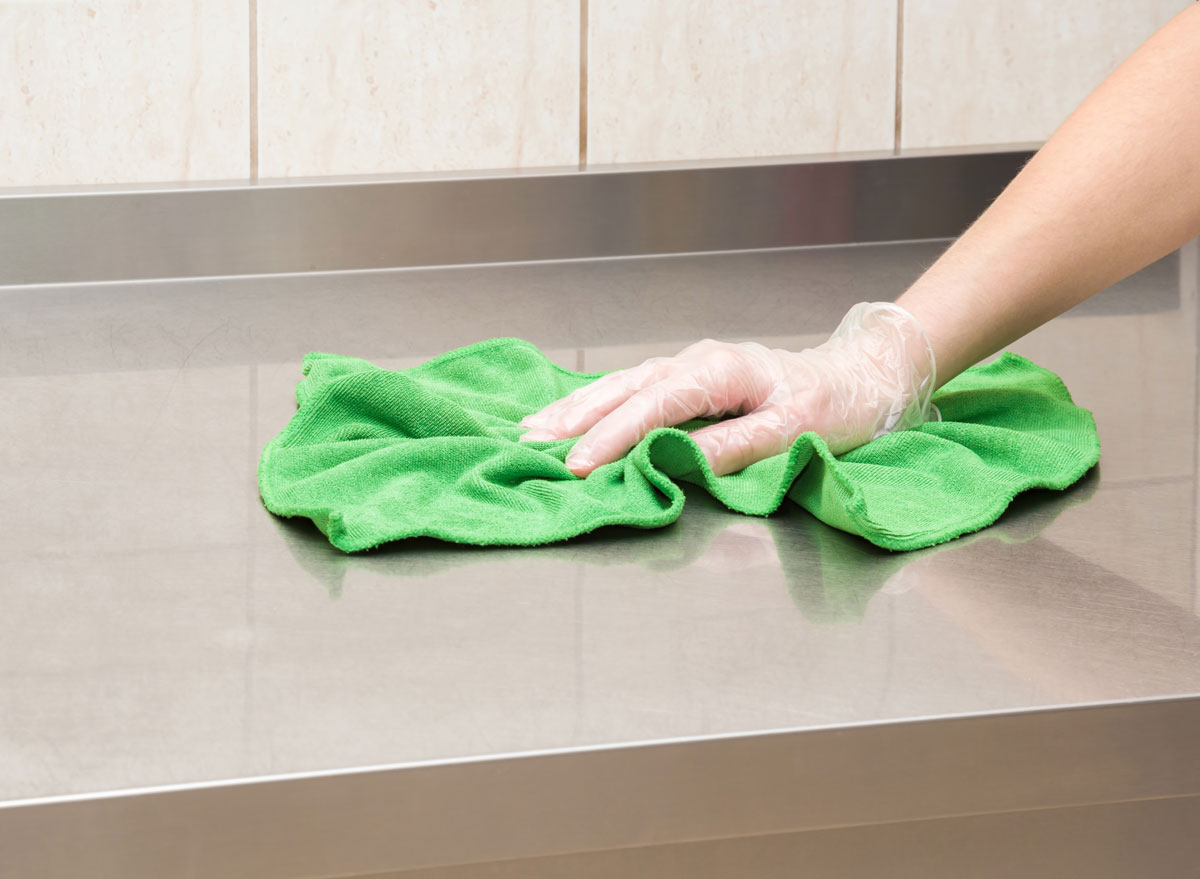
Believe it or not, you are supposed to let the disinfectant sit for a while before wiping it off. According to a poll conducted for the American Cleaning Institute, "twenty-six percent of those surveyed say they spray and then wipe the surface immediately after, while another 16 percent make a quick pass with a disinfectant wipe." You have to allow disinfectant sprays to properly kill germs and viruses. Remember to use it as directed.
READ MORE: Click here for all of our latest coronavirus coverage.
You're not following the directions.
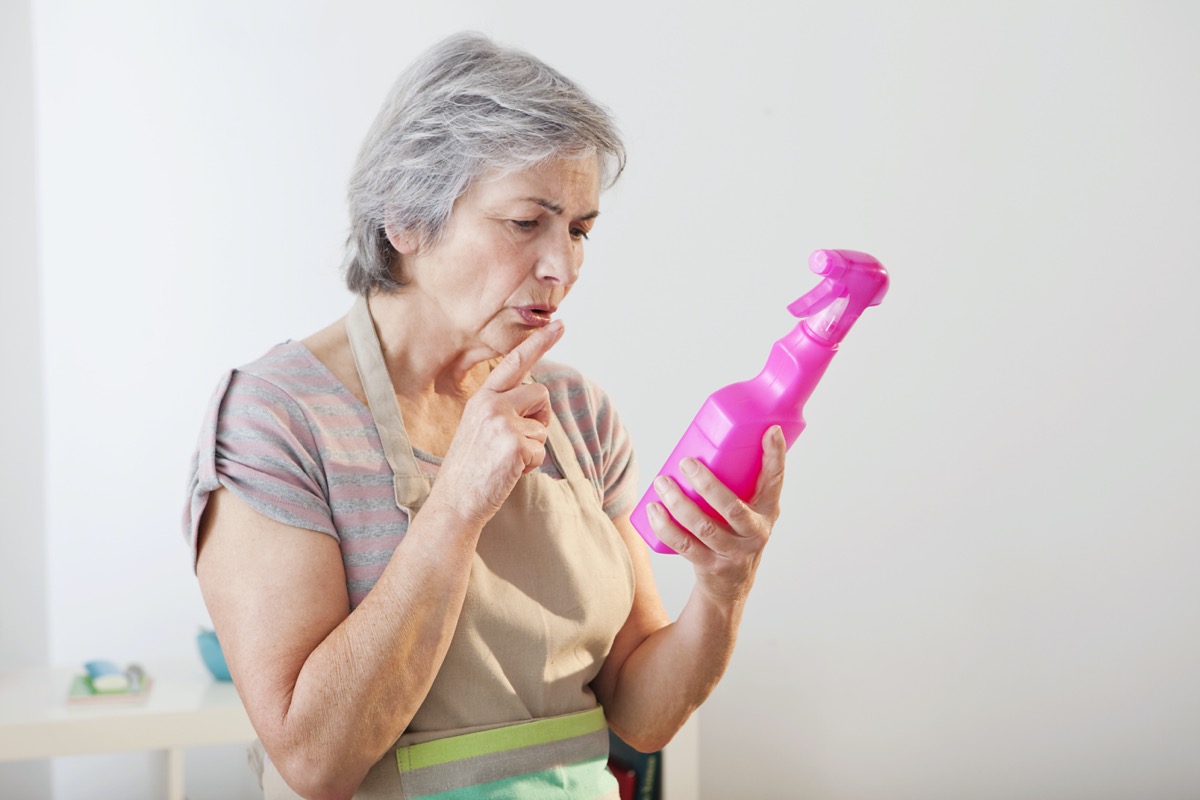
If you are not reading the directions labeled in the back of a disinfectant spray, you may miss out on key steps that help prevent and kill viruses and germs that make us sick. Like, how long does the product should be left? And if you are not following the directions carefully, especially when mixing ingredients and waiting for the solution to work, you may not even disinfect the area at all. You can damage surfaces or have bad chemical reactions. Not reading the label may lead to your money and product being wasted.
You're not cleaning the area first.
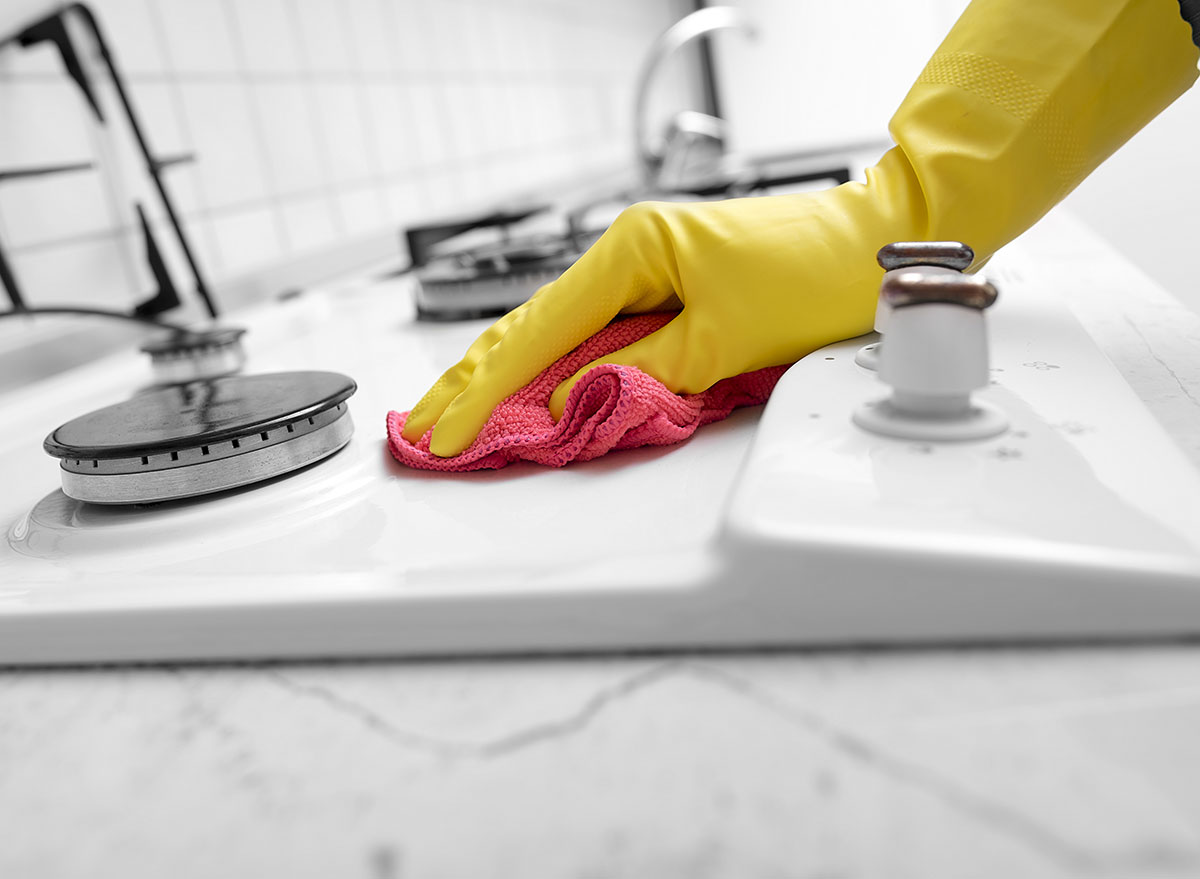
Pre-cleaning surfaces before disinfecting removes excess dirt or grime which helps with the process. According to the CDC, "cleaning is the necessary first step of any sterilization or disinfection process." Keep in mind that cleaning and disinfecting are two completely different things and steps to this process. During the pandemic, it is essential to clean and disinfect your kitchen daily.
You're skipping areas.
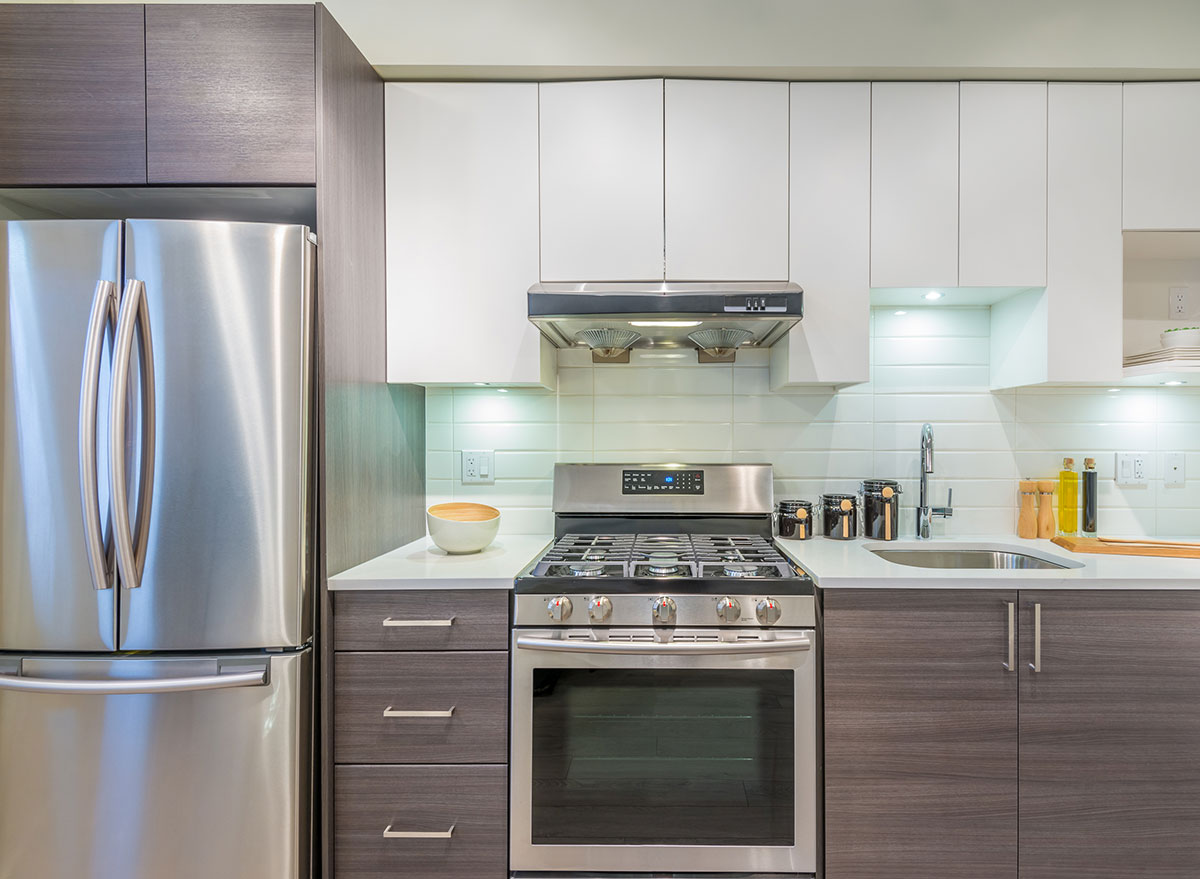
It is important to make sure that you are not skipping or missing any areas of your kitchen. The coronavirus can live "on plastic, stainless steel, and copper for 72 hours or more," according to a study in The New England Journal of Medicine. Cleaning your kitchen counters or anything that is made out of plastic, stainless steel or copper needs to be cleaned and disinfected. It's important to be aware of all your surfaces, not just the ones you commonly use.
You're disinfecting your sponges wrong.
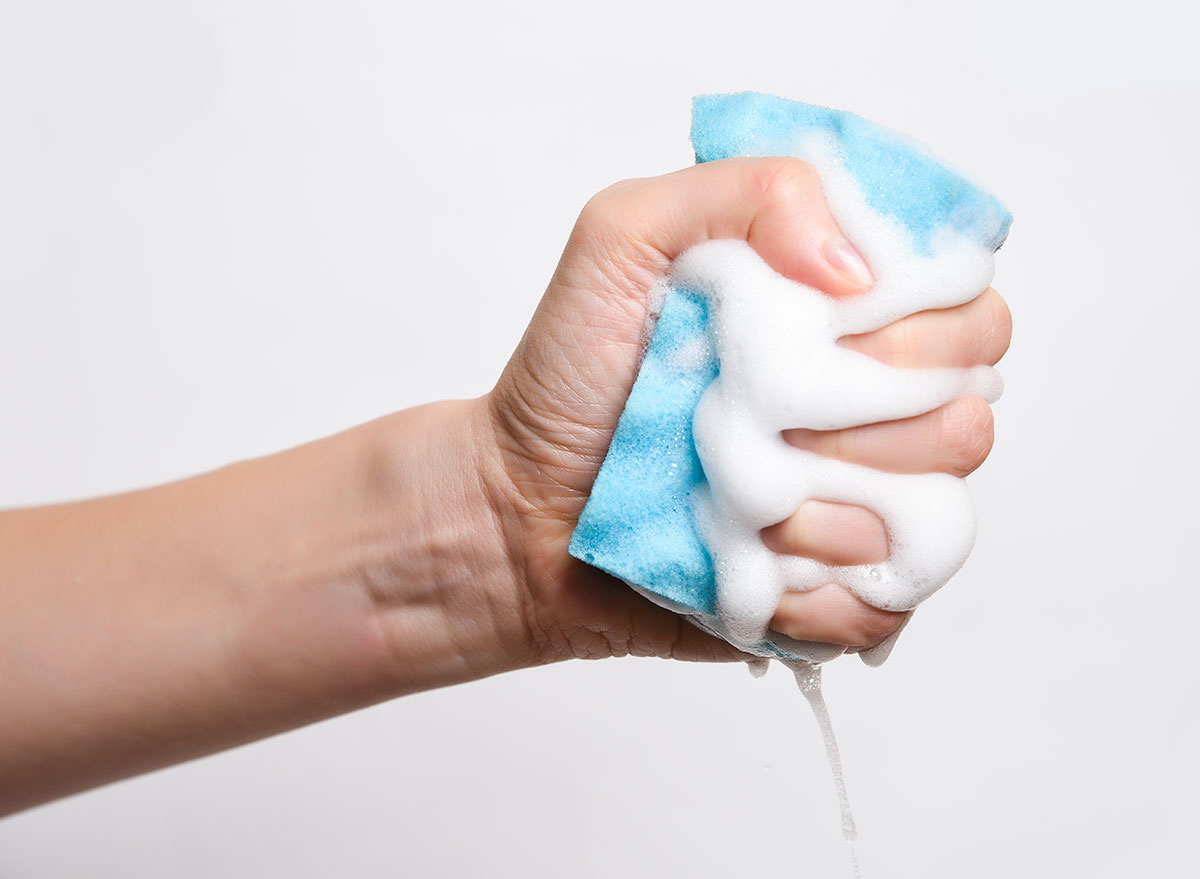
If you are used to disinfecting your sponges with hot, soapy water or bleach then you might want to reconsider. "Disinfecting your sponge daily by putting it in the top shelf of the dishwasher when running a full load. Or, you can dampen it and heat it in the microwave for a minute," according to Jennifer Quinlan, professor at the Department of Nutrition Sciences at Drexel University. Kitchen sponges harbor mold and bacteria. Both options use heat, which will help disinfect the sponge and kill the bacteria.
You're not using microfiber rags.
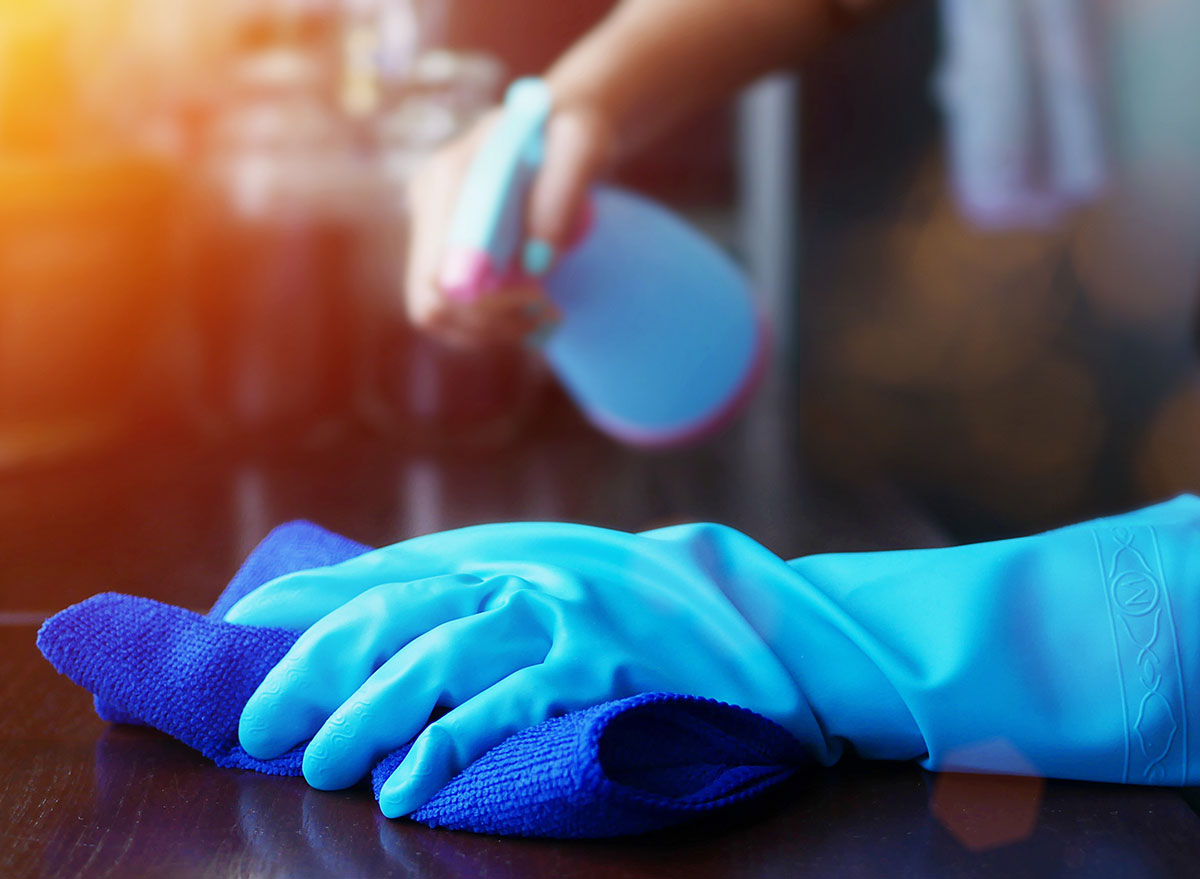
Using a microfiber rag instead of regular paper towels will help you disinfect quicker and cheaper. "Using microfiber rags, you can clean and disinfect in 3 motions. First, wet with water. Second, wipe over with the microfiber rag so that you can pull all the dirt out and away, and then dry it off," according to Roman Peysakhovich, co-founder of One Desk Cleaning. It will help clean surfaces and avoid cross-contamination with other kitchen surfaces.
You're not cleaning your knife blocks.
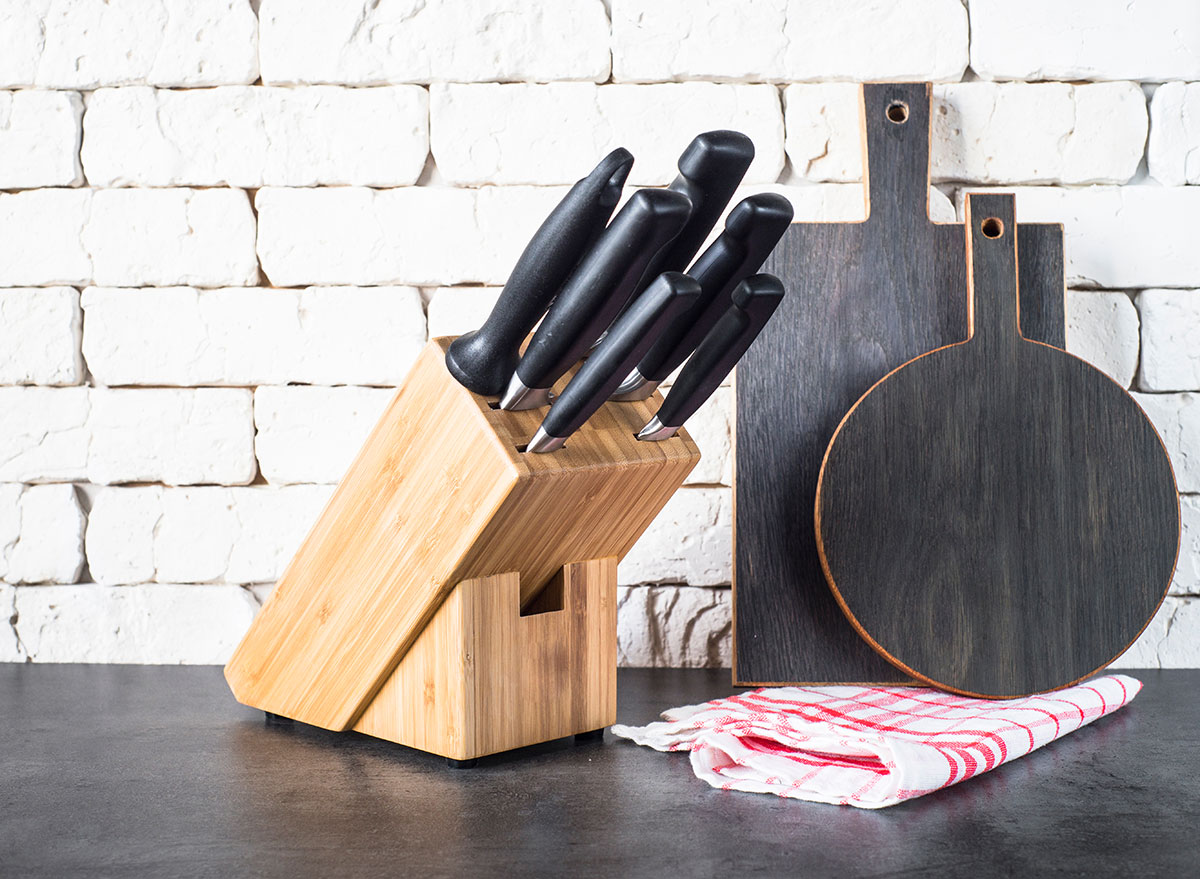
Air can help spread dust particles, which can carry bacteria or viruses. Kitchen equipment like knife blocks and their slots "are excellent breeding grounds for molds and bacteria," according to Tony Abate, certified indoor environmentalist and vice president of AtmosAir Solutions. If you are placing your knives in there and aren't cleaning the slots, there's a high chance bacteria is spreading to your food when you are preparing it. "Use a pipe cleaner with a white vinegar baking soda solution to get into those crevices. Also, remember to allow it to completely dry before use," says Abate.
You're skipping places in your refrigerator.
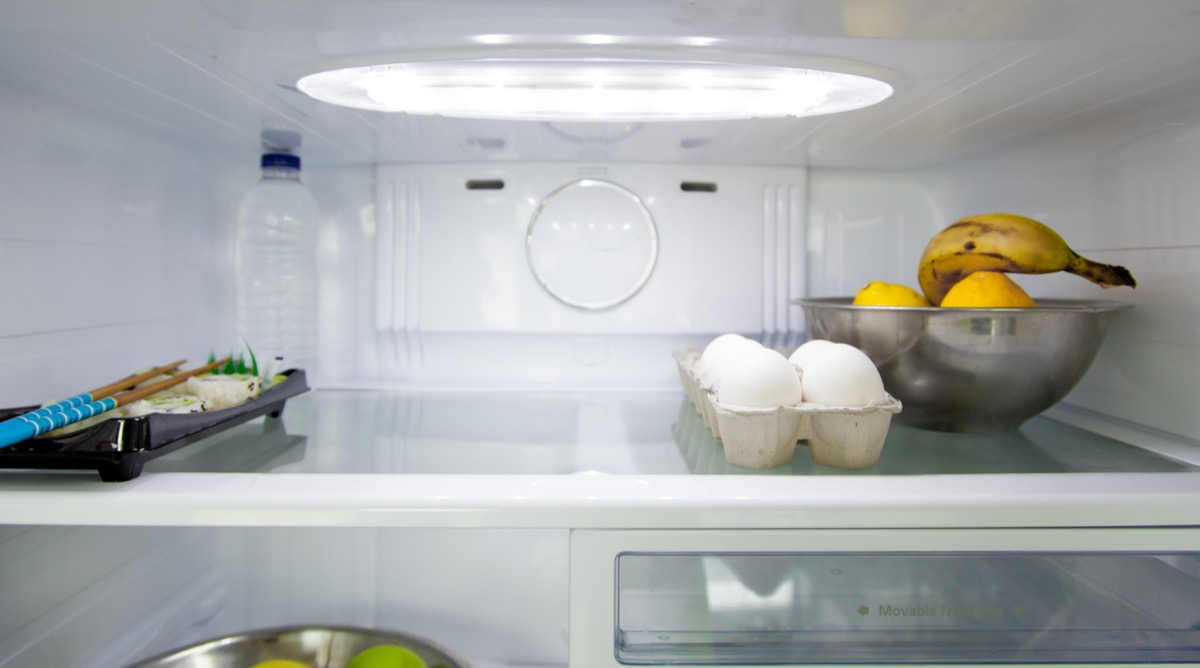
Cleaning your fridge is probably one of the most important places to keep clean. It is where all of your food is stored. Cleaning obvious places like storage bins and your freezer are places you wouldn't normally skip but there are less obvious places that people are not aware they should be cleaning and disinfecting. "Ice makers and rubber door seals can harbor bacteria and molds. A detailed deep clean with a white vinegar baking soda solution should be done as often as possible to disinfect these surfaces," says Abate.
STAY INFORMED: Sign up for our newsletter to get the latest coronavirus foods news delivered straight to your inbox.
You're not cleaning your oven.
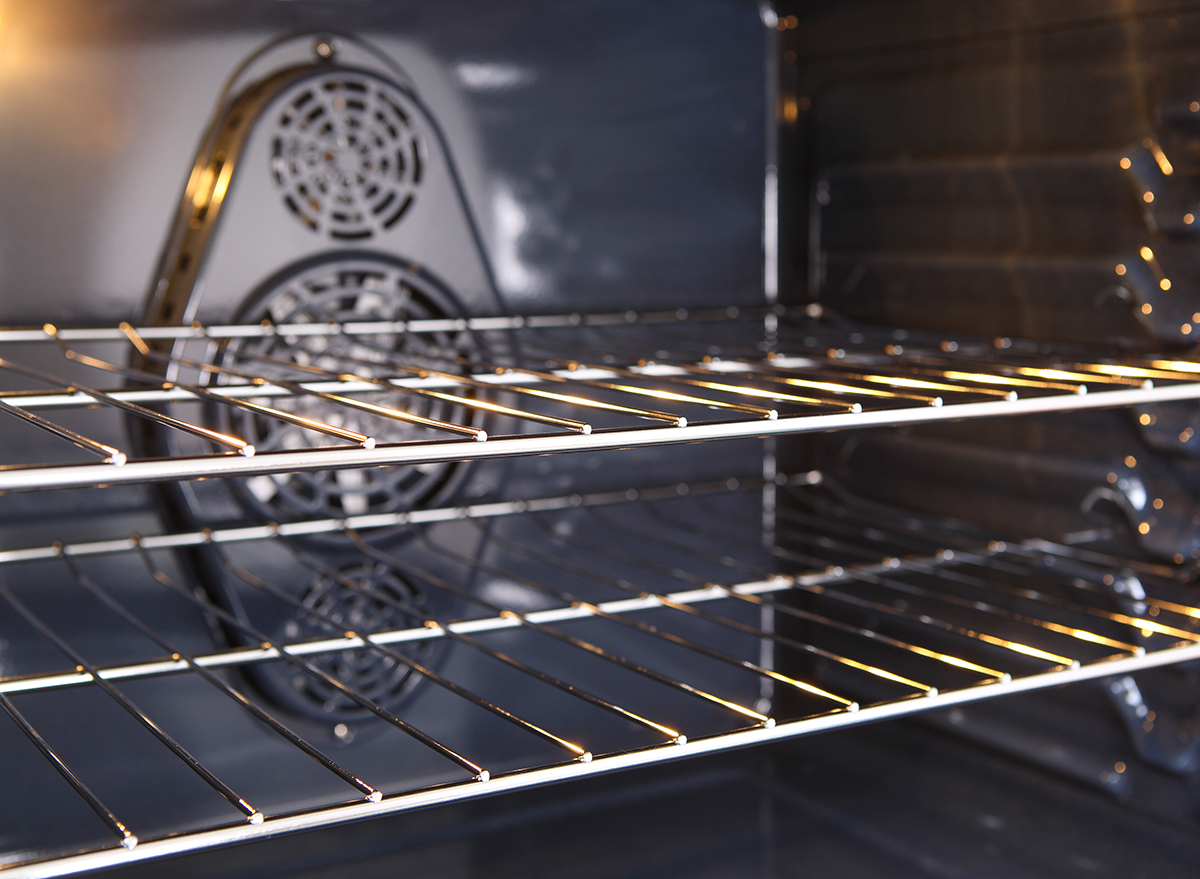
If you skip cleaning your oven, this might be the perfect time to do it. Cleaning your oven should be a monthly task but you should wipe down the oven door at least once a week. During this pandemic, you might want to change those cleaning tasks to perhaps daily and weekly cleaning. Adding a layer of bicarbonate soda can help disinfect and get rid of all the grease that is stuck in there.
You're not deep cleaning your blender.
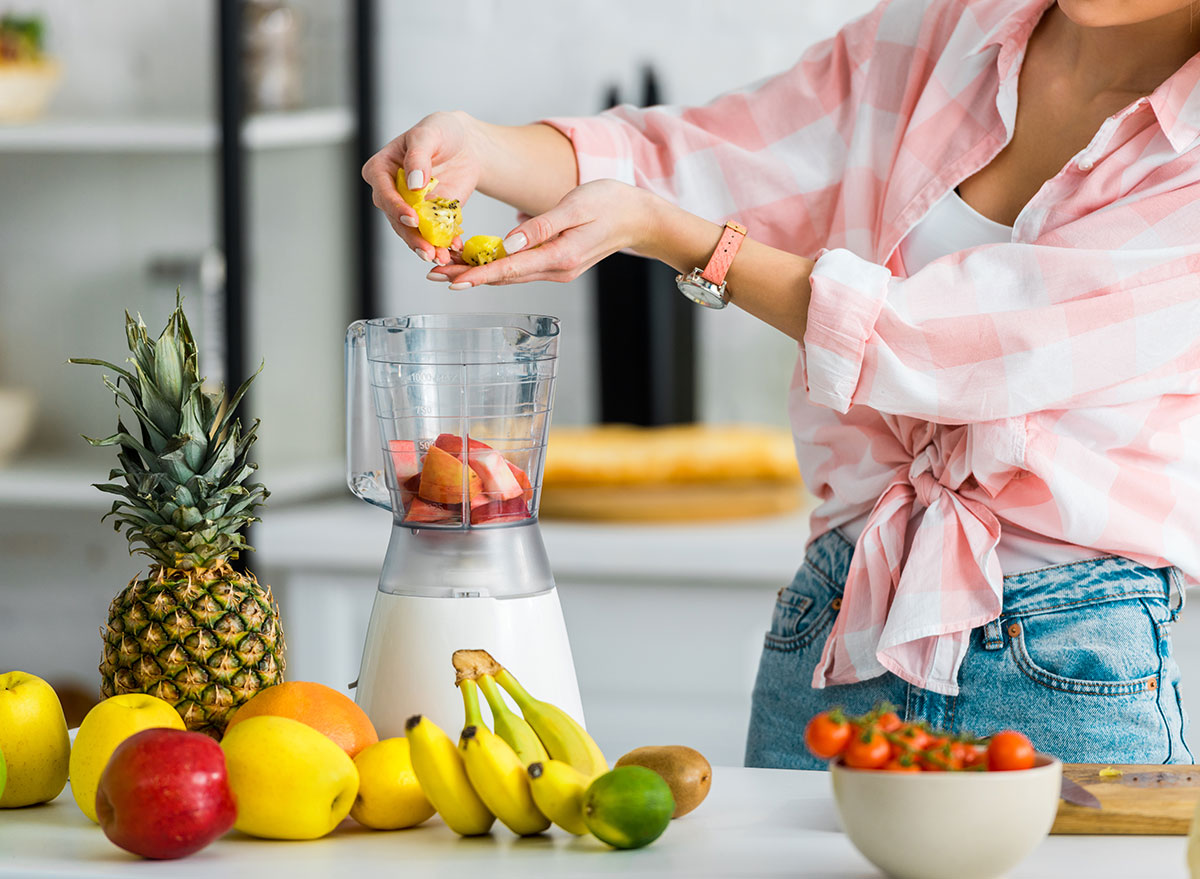
Rinsing your blender with hot water and soap is just removing the dirt from the surface. Deep cleaning your blender with water, baking soda, and dish soap can really remove the excess dirt and germs that stay stuck in the corners of your blender.
You're not cleaning your dishes the right way.
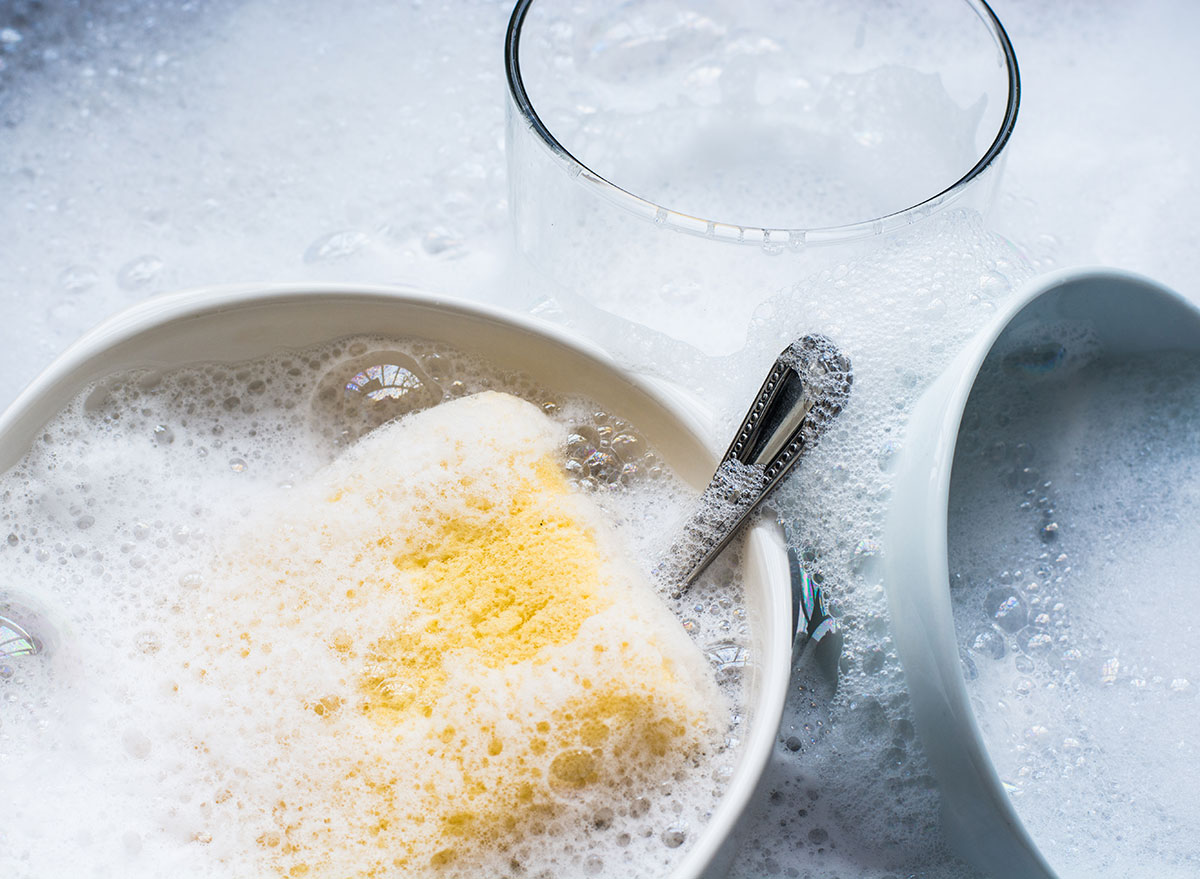
Using hot water to clean your dishes is vital in killing off the germs. "In fact, it's better to let your dishes soak in hot water with dish soap for approximately 5 minutes before washing, that will help lift the food and grime away from the dish too, so you don't have to spend as much time scrubbing," says Kathy Turley, Director at Home Clean Heroes. Making your cleaning process efficient and faster.
You're not cleaning your sink.
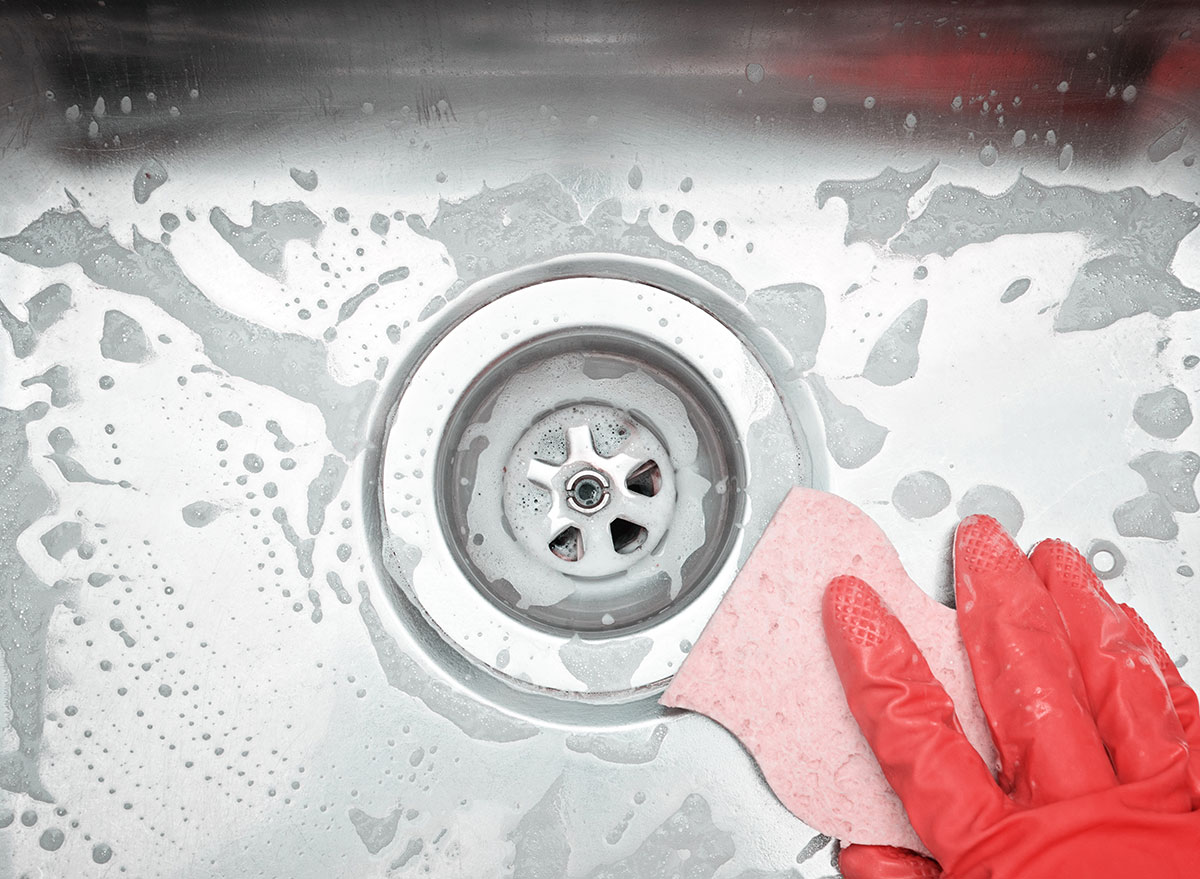
More often than not people may skip cleaning their sink. Having leftover food bits in your sink can create more germs. Even if you are properly cleaning your dishes, if your sink is not cleaned you will just be transferring germs to your dishes and increasing your chances of getting sick.
You're wiping your counter with a sponge.
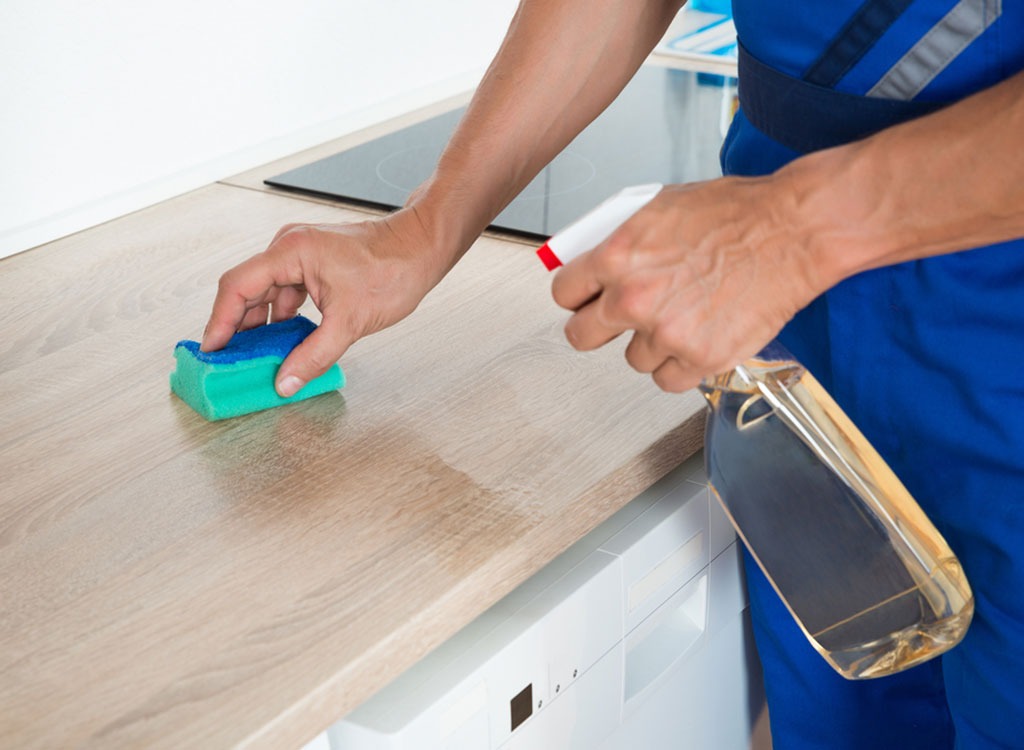
If you use sponges instead of microfiber rags or paper towels to clean your kitchen counters, you are just causing the transfer of germs. Sponges contain a lot of germs, that is why disinfecting them properly or replacing them can help avoid contamination in your kitchen.
Now that you know some common mistakes, it is important to read product labels and instructions. Make sure to not skip any areas in your kitchen and clean daily. For the safety of your family, avoiding these mistakes will help them avoid getting sick.

